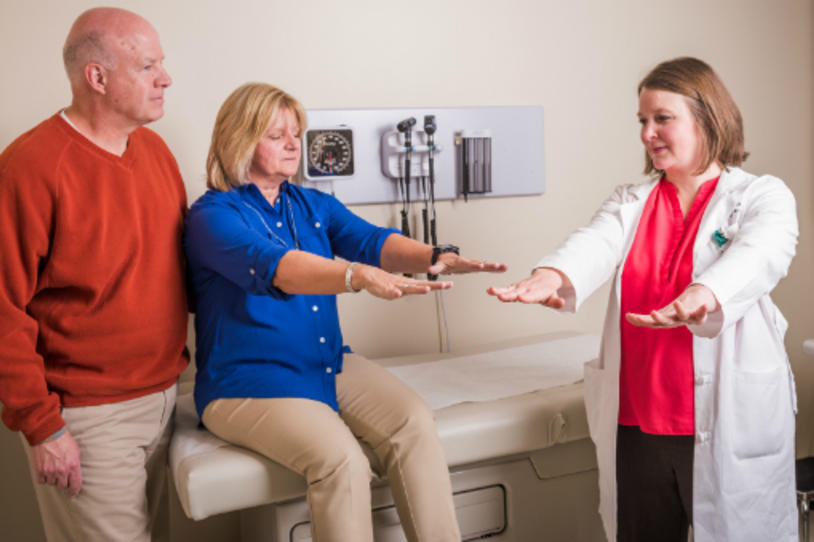
Just like putting miles on a car adds wear and tear, daily life puts stress on our bodies that can add up over the years. While this stress can take its toll on any part of the body, problems in the lower (lumbar) back and spine are particularly common with age. And, because Parkinson’s disease (PD) movement, walking and posture symptoms can put extra stress on the back and spine, these issues may be more common in people with PD.
Back Problems Are Common in People with and without Parkinson’s
The back is made up of varied structures that protect the spinal cord and nerves, which send signals from the brain to the body to move, feel and respond. When different parts of the back are affected, certain problems may occur. These issues are common in many people, both with and without PD:
- Discs
Tougher tissue on the outside and mostly water on the inside, discs act as "cushions" between bones. Over time, discs can dry out, making them more likely to crack or break. This is known as a bulging, slipped or herniated disc. When an out-of-place disc pushes on or irritates a nearby nerve, it can cause numbness, tingling, pain or weakness, often in the buttocks or legs.Dried out discs also can leave bones to sit directly on top of one another, causing arthritis. This may lead to symptoms similar to those from a bulging disc. And, if severe, arthritis could narrow the space that holds the spinal nerves and cord. This condition, called spinal stenosis, may cause leg numbness, tingling and weakness as well as cramping or pain with standing or walking. Symptoms often improve with bending forward or sitting down.
- Bones
With age, our bones, including those in the spine, can become more brittle and at increased risk for breaking. This condition, osteoporosis, is more common in women and people who move less, including those with progressing Parkinson’s. Some people also have a curvature in the spine (scoliosis or kyphosis), which may be lifelong or, in later life, caused or worsened by arthritis, spinal bone fracture or another condition. - Muscles, Tendons and Ligaments
Tendons attach muscles to bones, and ligaments connect bones. These “workhorses” take the brunt of our daily activity. Heavy lifting or sudden, awkward movements can cause strain, sprain or inflammation, leading to muscle spasms, pain and stiffness. A “couch potato” lifestyle, with little or no exercise, can contribute to these injuries.
Some Back Problems Are More Specific to Parkinson’s
There are certain back-related problems that are more common in people with advancing PD or similar movement disorders. Forward bending, called camptocormia, typically occurs while standing, sitting and walking and resolves when lying down. Leaning to one side, called pleurothotonus or Pisa Syndrome, is less affected by position. Both conditions can cause back pain and walking and balance problems as well as increased risk of falls and social isolation. Exactly why these conditions happen is not known, but problems in muscles or brain circuits responsible for movement may contribute. Treatment may include Parkinson’s medication and/or muscle relaxants; botulinum toxin injections; physical therapy or, in rare cases, deep brain stimulation surgery.
Evaluation Involves Exam and Imaging
To determine the cause of back symptoms, doctors perform a neurological examination and often also spine imaging, such as a CT or MRI scan. A myelogram, which involves injecting a dye into the spinal canal, also may be necessary in some cases.
Treatment Depends on the Cause
Once you and your doctor find the cause, you can create a personalized treatment plan. This may include medication or injections to treat pain and physical therapy or exercise to strengthen muscles or improve posture. It also may involve behavioral changes such as gradually increasing activity if you are sedentary, losing weight if necessary, avoiding heavy lifting or quitting tobacco use, which can limit blood and oxygen flow to the back. (These are also steps you can take to prevent back problems.) In some cases, your doctor may recommend surgery. For questions to consider and tips on preparing for a procedure, read our blog on surgery and Parkinson’s.
